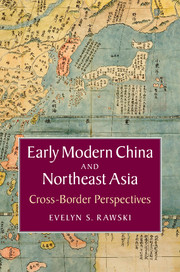Conclusion
Published online by Cambridge University Press: 05 June 2015
Summary
What would Chinese history look like if it were written from the perspective of the periphery and not the core? De-centering China entails focusing on interaction between the borderlands and the Central Plain as the dynamic engine behind the long-term development of China's imperial formation, and considering the long periods when China was divided or ruled by non-Han peoples, generally from its northern or northeastern frontiers, rather than concentrating attention on periods of unified rule. De-centering China also requires us to study texts produced by borderland peoples, and to contemplate events in which the Chinese heartland was encompassed in historical movements of regional or global dimensions.
Why de-center China? Orthodox historians neglect the story of how peoples from the borderlands interacted, formed states, and challenged Central Plain regimes. To justify this oversight, they rely on the traditional generalization that the horse-riding nomads had to dismount in order to rule, i.e. that they had to learn Chinese ways in order to govern the Central Plain. Despite scholarship that shows northeast regimes rather quickly developed bureaucratic modes of governance and political rhetoric through long contact with Chinese states, the notion that frontiersmen might conquer China, but would then find themselves enveloped by Chinese culture, persists. The traditional framework of dynastic cycles, along with officially commissioned dynastic histories that perpetuate this idealized and distorted vision of a unified China that exaggerates continuity, downplays the distinctiveness of each ruling house, and thus its special historical contribution.
The gap between image and reality is especially significant with regard to the many centuries when non-Han rulers – including the Tang, Yuan, and Qing – governed the Chinese heartland. For example, although the Tang era has been described as a “golden age” of Chinese history, its frontier origins played virtually no role in analyses of its historical contributions outside the military sphere.
- Type
- Chapter
- Information
- Early Modern China and Northeast AsiaCross-Border Perspectives, pp. 225 - 234Publisher: Cambridge University PressPrint publication year: 2015

